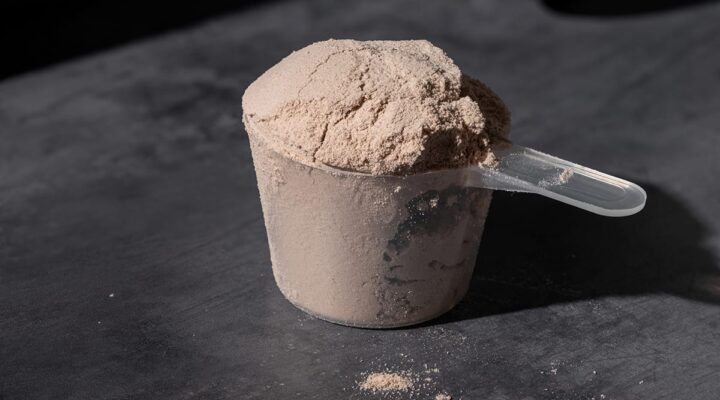How to Tap Into the Benefits of Breathwork (Beyond Relieving Anxiety)

Thanks to the phenomenal rise of James Nestor’s best-selling book ‘Breath: The New Science of a Lost Art’, the power of breathwork has finally reached the masses, and it’s fast become one of the most popular wellness trends of recent years.
Best known for soothing stress and relieving anxiety, intentional deep breathing techniques have become a powerful go-to for carving out moments of calm in an increasingly hectic world.
But breathwork isn’t a one-size-fits-all deal, and there’s a whole toolkit of breathing benefits beyond simply releasing tension. Whether you’re looking to build energy, crush it at the gym or gain hyper-focus ahead of a tight work deadline, there’s an exercise for pretty much everything.
First up, what is breathwork?
For the uninitiated, breath exercises, also known as yogic pranayama, involve changing your breathing patterns to help regulate your body’s automatic stress response.
Studies have shown that a regular practice can have a surprisingly positive effect on the body, decreasing blood pressure and reducing levels of the stress hormone cortisol in the blood.
Breathwork has its roots in ancient practices and traditions from various cultures worldwide, including India, China, Greece, and indigenous cultures. Modern breathwork practices have drawn inspiration from these ancient traditions, often combining techniques from different cultures and integrating them with wellness trends like sound healing, meditation, and hybrid yoga classes.
Each breathwork technique targets a unique aspect of the mind-body connection and can be used for a bunch of varying purposes, from waking up in the morning to getting better rest at night.
4 breathwork techniques to try this week
When you need to focus… try box breathing
Also known as four-square breathing, box breathing is one of the easiest breathing patterns to slot into a busy routine. BLOK yoga instructor Leo Oppenehim says that this simple exercise can be done anywhere and is specifically beneficial for those days when you need to knuckle down to a high-pressure work task.
“Box breathing involves inhaling through the nose for a count, holding for the same count, exhaling through the nose for that count, and then holding again before repeating,” he explains.
“While breathing in an equal box shape, you’re focusing on a deep diaphragmatic breath, which can stimulate the vagus nerve.” FYI: This all-important nerve is a crucial part of the parasympathetic nervous system, which helps regulate many bodily functions, including heart rate, digestion, and relaxation responses.
Activating it, alongside increasing CO2 levels in the blood, can keep us calm when deadlines creep up, as it reduces the ‘fight or flight’ response associated with stress, allowing us to knuckle down with a clear, cool head.
When you need energy… try Wim Hof breath
Dutch daredevil Wim Hof’s unique breathwork technique gained worldwide attention when it was featured in the Netflix series The Goop Lab, where Gwyneth Paltrow and her team of ‘wellness gurus’ discussed its benefits.
Along with cold water immersion, a key pillar of his viral method is a short and sharp breathing technique that draws comparisons to Tibetan Tummo ‘heat’ meditation.
There are two stages to the breathing pattern: the first involves taking 30-40 rapid ‘power breaths’ where you inhale deeply and exhale quickly. The second stage involves taking one deep inhalation, a full exhalation, and then holding your breath for around 10 seconds while squeezing all of your muscles.
While scientific research on this method is ongoing, Oppenheim anecdotally reports that this energising breath style can be a potent technique for replacing a morning coffee habit, particularly if you regularly rely on trips to the Nespresso machine to stay awake in Zoom meetings.
“Coupled with cold showers, many people report feelings of euphoria after practicing this breathing method, which could potentially be associated with dopamine release. For me, everything feels suddenly ‘switched on’ after a round of Wim Hof breathing, so I use it in the early mornings rather than drinking caffeine.”

When you’re heading to the gym… use nasal breathing
If you want to build strength and speed in your athletic performance, the simple act of breathing could get you there faster.
Why? Because how you breathe is fundamental to transporting energy in, around, and out of your body. Studies have found that efficient breathing ensures that the muscles receive enough oxygen during physical activity, boosting endurance and reducing that flagging feeling. As an added bonus, it can also prevent the buildup of cellular waste like CO2, which can hinder your performance at the gym.
When we’re in the middle of a tough set of burpees or bicycle crunches, Oppenheim says that many of us resort to breathing sharply through our mouths. While this feels like the most efficient way to catch our breath, research suggests that mouth breathing is not as economical a process for oxygen delivery.
“Nasal breathing actually triggers the release of nitric oxide, a vasodilator that improves blood flow and oxygen delivery to working muscles. Doing it might feel slightly odd at first, but you’ll soon notice you fatigue less quickly,” says Oppenheim. Next time you’re on the treadmill, quit gasping through the mouth and switch to slow and controlled nasal breaths instead for a better chance of hitting a PB.

When you can’t sleep… try Nadi Shodhana
Nadi Shodhana, or alternate nostril breathing, originates from ancient yogic traditions in India. It’s part of pranayama, the yogic science of breath control, which has been practiced for thousands of years.
“This technique involves inhaling and exhaling through alternate nostrils, using the thumb and the pinky finder to close each nostril as you take a deep breath,” says Oppenheim. “I find that it can induce a sense of calm, aiding in relaxation before sleep.I like to think of it as balancing out the ‘yin and yang’ energies in the body, or the rest and digest with the fight or flight.”
For this reason, Nadi Shodhana is often used in meditation to clear the mind and focus on the present moment, but there’s no reason why you can’t reap these benefits before bed. So if you often spend your evenings tossing, turning, and longing for sleep to take hold, a few rounds of alternate nostril breathing might be the gentle nudge you need to finally drift off.


















